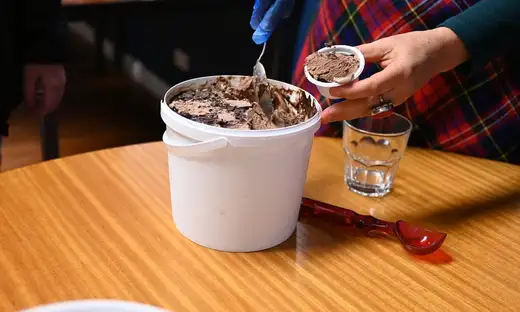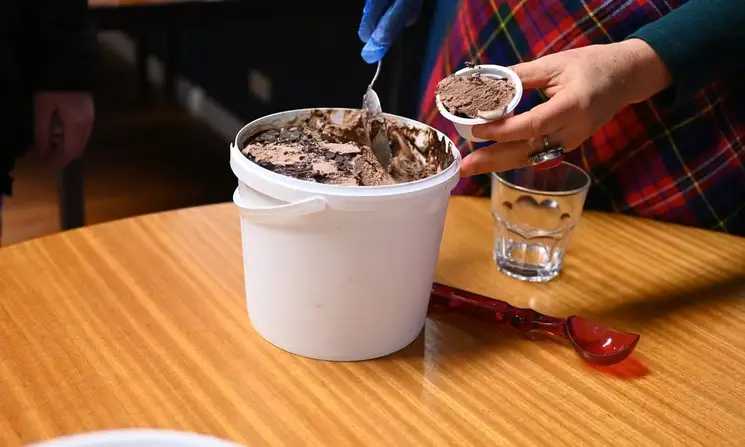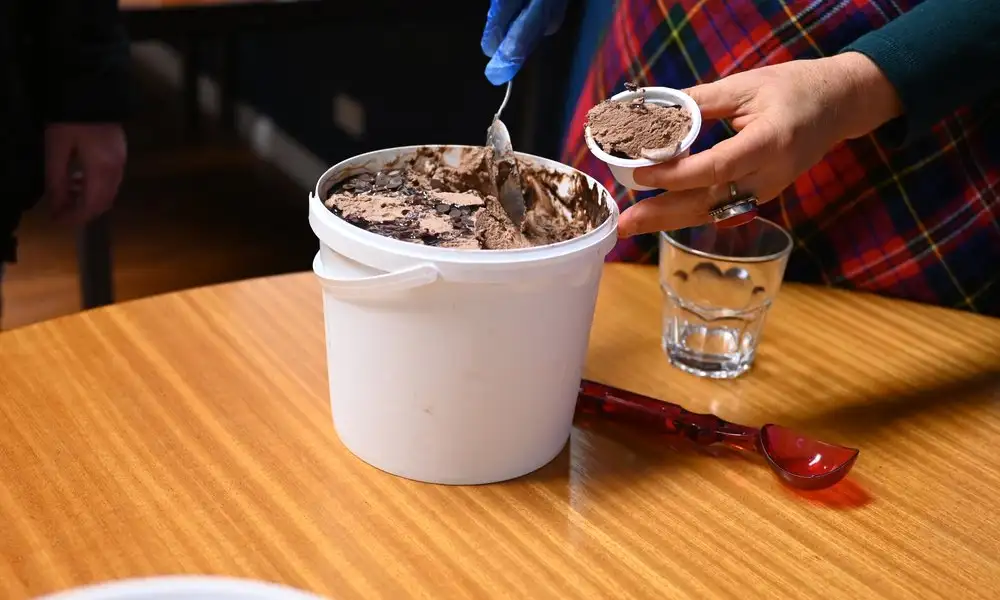
Objectives
- To provide a facility for quality research, teaching and extension in sheep and beef farming.
- To be managed as a profitable commercial sheep and beef farm.
- To provide a link between the university and agribusiness.
Farm features
About the farm
In 1983, Tuapaka's 420 hectares were divided into two blocks so that better commercial use could be made of the farm:
- a 111-hectare unit of predominantly flat ground, and
- a hill unit of 365 hectares.
Initially following this subdivision it was decided to run bulls from weaners to 18 months on the smaller unit, with a sheep and bull beef system put into place on the larger unit.
Recently, management strategies have changed to better use the property and improve the farms ability to service research and teaching activities.
The property is subdivided into 85 paddocks which are made up of:
- flats: 31 paddocks ranging from 1.3 to 5.2 ha
- hill unit: 54 paddocks ranging from 1.2 to 12.8 ha.
Fences on both the flats and hill unit are conventional posts and battens with electric outriggers, plus some 3-wire permanent electric. A grass laneway system allows access to all paddocks on the flats.
Location and map
Fitzherbert East Road, 15km from Palmerston North.
800 Fitzherbert East Road, Aokautere 4471, New Zealand
Area
476 hectares:
- 111 hectares flat block
- 365 hectares hill block
Effective Area: 359 hectares (99 hectares flat block, 260 hectares hill block).
Altitude
100–360 metres above sea level.
Contour
Flat unit
Mostly flat with some rolling country.
Hill unit
Rolling to very steep hill country.
Noxious weeds
Gorse and California thistles.
Noxious animals
Possums and rabbits.
Soils
Flat block
Tokomaru Silt Loam and Ohakea Silt Loam (derived from wind-blown dust from riverbeds). The subsoil is compacted which causes the soil to be slow draining. Natural fertility is medium to high.
Hill block
Steepland soil related to Makara Steepland Soils derived from greywacke and slope deposits. Natural fertility is generally low to very low.
- Hilly and Steepland soils related to Halcombe hill and steepland soils – derived from loess, unconsolidated sediments and slope deposits. Natural fertility is very low.
- Shannon and Tuapaka series – derived from loess overlaying marine sands and have a naturally low fertility.
- Korokoro series – derived from loess and slope deposits overlying greywacke, these soils are generally free draining and have a low natural fertility.
Climate
Climate data for Aokautere, the nearest Council monitor to the farm.
| January | February | March | April | May | June | July | August | September | October | November | December | Year | |
|---|---|---|---|---|---|---|---|---|---|---|---|---|---|
| Average high C | 21.0 | 22.0 | 20.0 | 17.0 | 15.0 | 13.0 | 12.0 | 13.0 | 14.0 | 16.0 | 17.0 | 19.0 | 16.6 |
| Daily mean C | 17.5 | 17.5 | 15.5 | 12.5 | 11.0 | 9.0 | 7.5 | 8.5 | 10.0 | 12.0 | 13.5 | 15.5 | 12.5 |
| Average low C | 13.0 | 13.0 | 11.0 | 8.0 | 7.0 | 5.0 | 3.0 | 4.0 | 6.0 | 8.0 | 10.0 | 12.0 | 7.5 |
| Rainfall mm | 59.8 | 42.4 | 78.0 | 67.6 | 81.1 | 106.6 | 62.7 | 96.0 | 75.4 | 84.2 | 81.6 | 74.9 | 910.0 |
| Average rainy days | 15 | 12 | 16 | 18 | 20 | 24 | 20 | 21 | 22 | 18 | 20 | 19 | 225 |
Tuapaka Farm experiences 1,100 mm annual rainfall, on average. Summer is mainly dry. Prevailing winds are westerlies and south easterlies.
Water supply
Water is sourced from a bore and it is pumped to reservoirs on the hills and gravity-fed to most paddocks.
Farm buildings
| Tuapaka homestead | Stock Manager |
|---|---|
| Second house | Shepherd General |
| Third house | Empty |
The homestead was extensively upgraded in 2018. The Shepherd General’s house is tired and is programmed for an upgrade. The third empty dwelling is beyond refurbishment.
Five-stand wool shed and covered yard complex with a 1,500-ewe capacity. Two sets of satellite yards. One main set of cattle yards (near the wool shed) with five main pens with concrete floor crush to race and weighing platform (electronic scales), head bail and spray dip. Another satellite set of yards near the south-western farm boundary.
Staff
Two permanent staff and casual staff as required.
Pastures and forestry
The flats are on a five year rotation of hybrid ryegrass/chicory/white clover species. For the hill unit, typical hill country pastures dominate consisting of browntop, crested dogstail with perennial ryegrass and white clover.
Forestry
| Stand | Species | Hectares | Year planted |
|---|---|---|---|
| Tuapaka 01 | Eucalypts | 0.56 | 1980 |
| Tuapaka 02 | Pinus radiata | 9.12 | 1993 |
| Tuapaka 03 | Pinus radiata | 8.02 | 1998 |
| Tuapaka 04 | Cupressus macrocarpa | 0.80 | 1998 |
| Tuapaka 05 | Pinus radiata | 5.26 | 2000 |
| Tuapaka 06 | Eucalyptus fastigata | 0.72 | 2000 |
| Tuapaka 07 | Pinus radiata | 9.23 | 2002 |
| Tuapaka 08 | Pinus radiata | 2.53 | 2005 |
| Tuapaka 09 | Pinus radiata | 2.36 | 2005 |
| Tuapaka 10 | Pinus radiata | 2.67 | 2007 |
| Tuapaka 11 | Pinus radiata | 3.92 | 2015 |
| TOTAL AREA | 45.19 |
As part of NZTA’s construction of the new Ashhurst/Woodville expressway, 16.43ha of riparian and wetland areas were planted in the winter 2021 to offset resulting environmental damage. In conjunction with this programme Tuapaka management has identified a further 9.4ha which has been retired and earmarked for future biodiversity planting.
Cover
As at 30 June 2021
| Cover type | Hectares |
|---|---|
| Old pasture | 200.00 |
| New pasture including chicory and clover | 82.00 |
| Good average pasture | 76.97 |
| Commercial forestry (as above) | 45.19 |
| Races, tracks, waste | 28.25 |
| Riparian diversity planting | 15.13 |
| Waterfall regeneration | 10.09 |
| Retired for future biodiversity planting | 12.99 |
| Manuka 2019 planting | 2.08 |
| Research - native shrub block | 2.00 |
| Wetland diversity planting | 1.30 |
Total cover 476 hectares.
Stock policies
Sheep
Approximately 1,700 breeding ewes, slightly less than 700 replacement ewe hoggets and 28 rams are carried on Tuapaka.
Replacements are bred on farm. All MAEwes are mated to a FE resistant maternal sire. Approximately 500 lambs > 36kgs are sold for slaughter at weaning in early December. The remaining lambs are drafted progressively through the season.
Around 380 4/5yr ewes are transferred to Keebles annually. Ewes are weighed and condition-scored four times a year.
Ewe hoggets are mated early May to a Terminal sire with about 50% of the progeny sold to the works and the rest sold store.
Key strategies to improve the performance of the flock
Continued pasture improvement including expansion of the flat country improvement.
A focus on all year-round nutrition of the ewe flock and hogget growth rates with an objective of lifting per head performances. Specifically the following.
- Heavier ewes at tupping – MAE at 67kg. 2ths at 63kg. This will result in higher scanning and lambing percentages.
- Focus on growing hoggets from weaning. Treat these as a finishing animal.
- Lowering the ewe death rate to provide more cull ewes for sale and more selection pressure in the flock.
Production and future targets
| 2020/2021 | 2021/2022 | 2024/2025 | |
|---|---|---|---|
| Scanning | 170.2% | 179.3% | 180.0% |
| Dry | 3.2% | 3.2% | 2.5% |
| Ewe death | 5.7% | 6.0% | 5.0% |
| Lambing | 142% | 141% | 150% |
| Weaning weight | 28.7kg | 30.0kg | 32.0kg |
Cattle
Tuapaka has recently bred up an Angus breeding herd. The herd is made up of 116 breeding cows (91 Angus breeding cows and 25 in-calf Angus heifers) and replacements. Also grazed are six Angus bulls and 90 Angus calves.
Key strategies to improve cattle performance
- Target winter growth rates of over 0.5kg/day for June and July with the use of crops.
- Kill over 60% of animals before the second winter.
- Weaning weight equivalent to 50% of dam winter weight.
Production and future targets
| 2020/2021 | 2021/2022 | 2024/2025 | |
|---|---|---|---|
| Scanning | 94.8% | 93.2% | 96.0% |
| Cow death | 2.51% | 1.30% | 1.20% |
| Calving | 86.5% | 88.0% | 92.0% |
| Dry | 7.2% | 5.1% | 5.0% |
Fertiliser
Soil tests are undertaken biennially on pre-determined transect lines.
Fertiliser applications are then planned in conjunction with the Fertiliser rep using Overseer with the objective of achieving economic optimum applications.
The following tables shows the average soil test readings on Tuapaka since the regular testing regime was established.
Flat unit
| Year | pH | Olsen P | SO4 | K |
|---|---|---|---|---|
| 2010 | 5.6 | 29.0 | 10.0 | 5.5 |
| 2012 | 6.1 | 22.0 | 9.5 | 5.0 |
| 2014 | 6.02 | 25.34 | 11.68 | 6.00 |
| 2018 | 5.9 | 22.4 | 8.6 | 9.0 |
| 2020 | 5.6 | 23.0 | 10.0 | 5.5 |
Hill unit
| Year | pH | Olsen P | SO4 | K |
|---|---|---|---|---|
| 2010 | 5.6 | 30.0 | 12.0 | 15.0 |
| 2012 | 5.7 | 20.0 | 9.0 | 11.0 |
| 2014 | 6.0 | 25.86 | 15.4 | 11.0 |
| 2018 | 6.0 | 25.5 | 8.2 | 14.9 |
| 2020 | 5.7 | 27.0 | 10.5 | 12.0 |
The 2021 fertiliser programme, which is typical, is as follows.
- Flats: 380kg/ha 10%K Super + N + Selenium (30-24-20-30). 2.5t/ha Lime.
- New Grass: 200kg/ha Crop15 + Se (30-20-20-15).
- Hill Block: 370 kg/ha Super + added selenium(0-18-0-22) applied autumn.
Wintering stock numbers
Numbers as at 1 July 2021.
Sheep
| Stock | Numbers | Stock units |
|---|---|---|
| MAEwes | 937 | 937 |
| Two tooths | 760 | 760 |
| Ewe hoggets | 710 | 497 |
| Rams | 35 | 28 |
| Sheep total | 2,451 | 2,222 |
Cattle
| Stock | Numbers | Stock units |
|---|---|---|
| MA cows | 91 | 546 |
| R1 Year heifers | 45 | 158 |
| R1 Year steers | 45 | 180 |
| R2 Year heifers | 25 | 150 |
| MA bulls | 6 | 33 |
| Cattle total | 292 | 1,067 |
Total stock units: 3,289
Our people
Tuapaka Farm is managed by Stephen Bayler with Johno Brophy as Stock Manager.

Steven Bayler
Research
We have three research projects currently underway at Tuapaka Farm.
Stream nitrate concentrations
Monitoring stream nitrate concentrations leaving an 85ha catchment on farm via the Main weir using a high frequency nitrate sensor in order to develop strategies to enhance nitrate attenuation in these features.
Water quality impact – sheep accessing natural waterways
Monitoring the behaviour and impact of sheep accessing natural waterways in spring, summer, autumn and impact on water quality.
Edible native plants
Edible native plant species in North Island hill country.
History
The original 420 hectare farm was acquired in 1938, with a further 56.5 ha added in 1971. Massey leased the land for approximately ten years until 1948. Following Crown ownership, the university purchased the land freehold in 2018.
Learn more about Massey's history
More information
For further information please email us at: agstation@massey.ac.nz.
Related content
Commercialisation
We turn innovative research into commercial opportunities through existing enterprises or new ventures.



